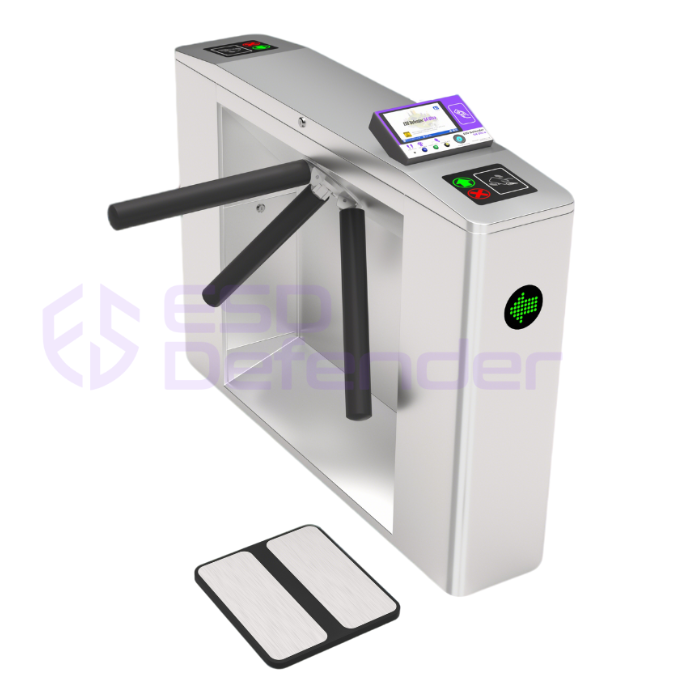In modern electronics manufacturing facilities, a specialized type of turnstile stands guard at the entrance to Electrostatic Protected Areas (EPAs) – the ESD turnstile. More than just a physical barrier, these intelligent access control devices serve as critical checkpoints in maintaining electrostatic integrity throughout the production environment.
The Dual-Function Design Principle
ESD turnstiles combine physical access control with real-time electrostatic monitoring:
– Integrated Detection Technology: Simultaneously verifies proper grounding through footplate sensors (measuring 750kΩ-100MΩ resistance) and wrist strap connectivity
– Multi-Stage Verification: Requires successful ESD compliance check before granting physical passage
– Visual Feedback System: LED indicators provide immediate pass/fail status using color-coded lighting
Operational Workflow in High-Volume Environments
The typical user interaction follows an optimized sequence:
- Authentication Phase: Employee presents RFID badge or biometric identification
- ESD Verification: System automatically tests both footwear and wrist strap connections
- Conditional Access: Only upon passing both identity and ESD checks does the turnstile release
This process typically completes in under 3 seconds, maintaining workflow efficiency while ensuring compliance. Facilities report a 92% reduction in unauthorized EPA entries after implementation.
Advanced Features for Modern Manufacturing
Leading-edge ESD turnstiles now incorporate:
– Predictive Maintenance Alerts: Monitoring wear patterns on contact points to schedule replacements before failures occur
– Environmental Compensation: Automatic calibration based on real-time temperature and humidity readings
– Data Integration: Seamless connection with facility ESD management systems for compliance reporting
Implementation Considerations
When specifying ESD turnstiles for EPA control, key factors include:
– Throughput requirements (standard models handle 20-30 persons/minute)
– Integration with existing access control systems
– Material compatibility with cleanroom or industrial environments
– Fail-safe operation modes for emergency situations
These systems have proven particularly valuable in semiconductor fabrication, medical device production, and aerospace component assembly – where a single electrostatic event can compromise product reliability. By combining physical access control with active ESD monitoring, these turnstiles provide an essential layer of protection in modern electrostatic control programs.







